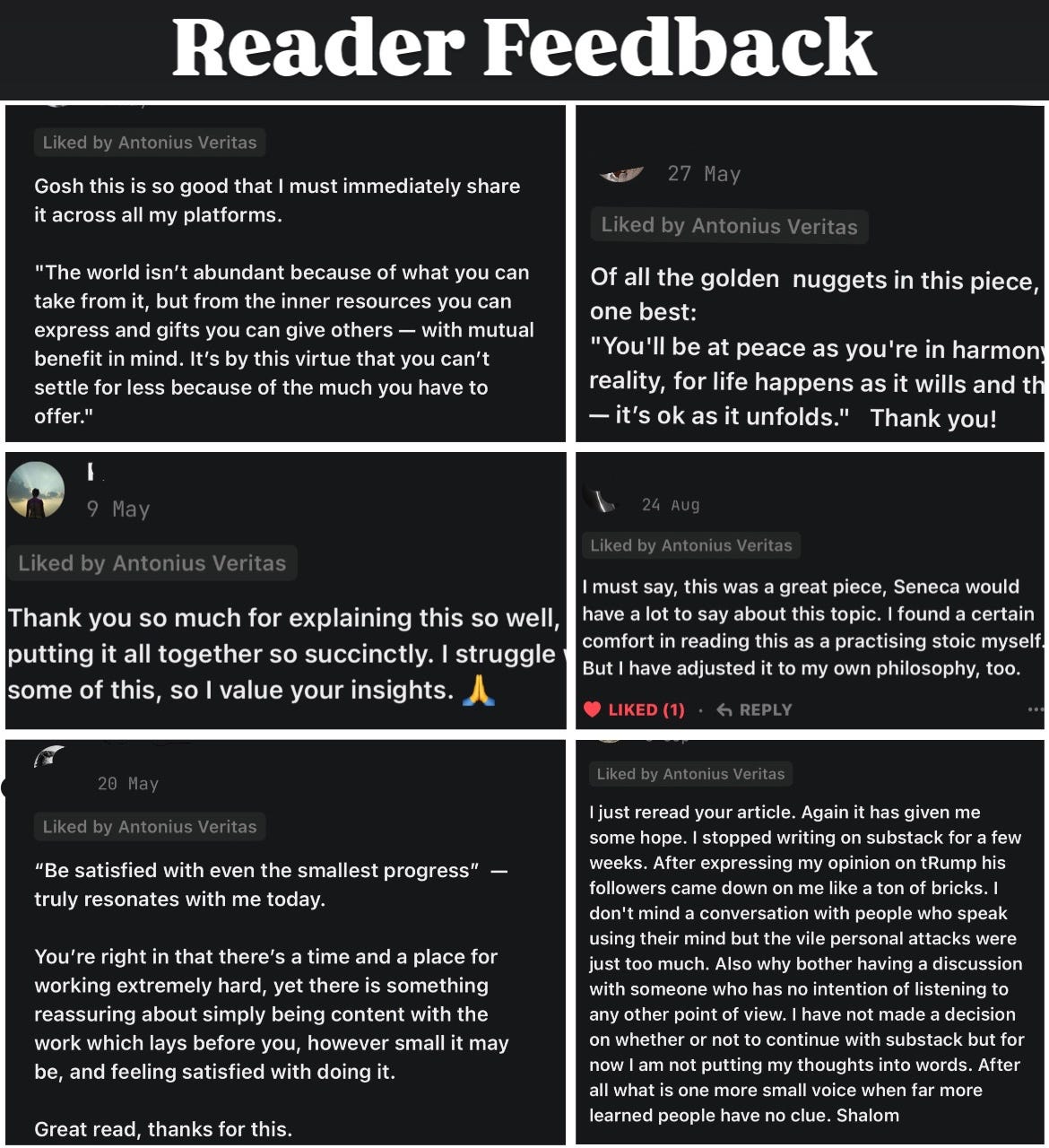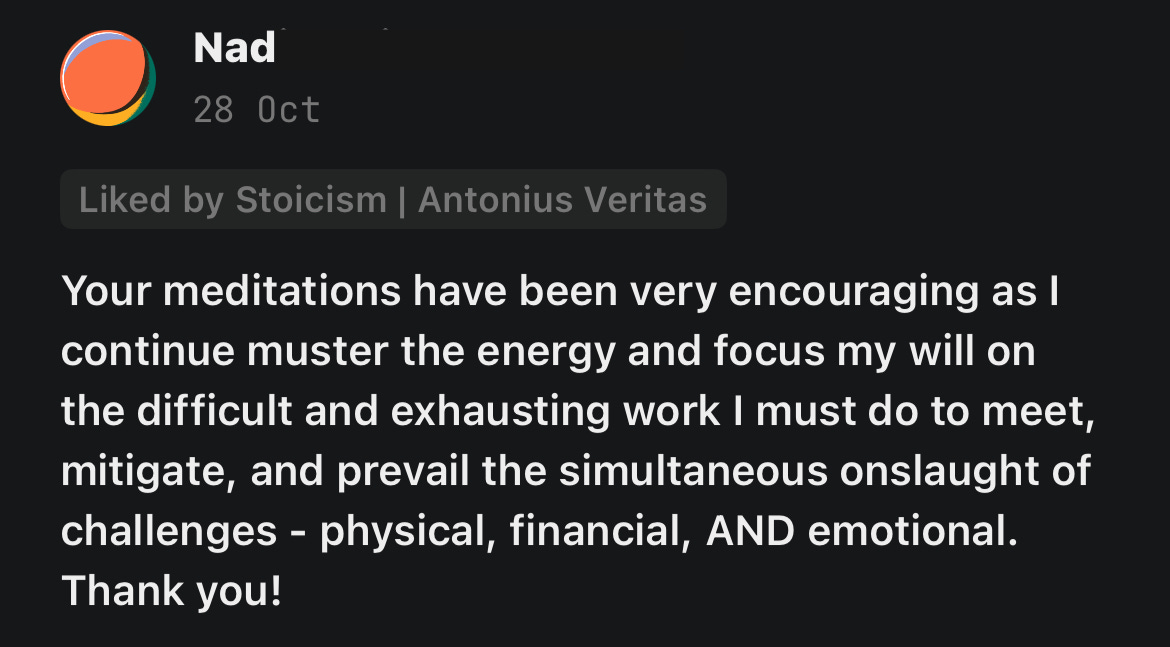Lead to Win II. Arrogance Vs Humility
If you want to improve, be content to be thought foolish and stupid.
The ‘Lead to Win’ section is a companion for The Stoic Manual to help you become wealthier, happier & more powerful through the best strategies and tactics to succeed at leading in your workplace, family, and business—by Dr. Antonius Veritas. Complement this with the ‘Neuroscience-based Tools’ section.
P.S: Scroll to the end for a mini-course, a step-by-step guide, on how to lead with humility. This information is worth the $2,000 people spend on Leadership seminars.
Introduction
Many of you have requested me to tackle how best to lead through Stoic principles.
I’ve therefore launched the Lead to Win section in that regard.
We’ll use some scenarios and stories from the hospital setting for illustrative purposes.
But you don’t have to know what every jargon means to get value from the entries.
I want to reassure you that once you get the concept, from a first principles perspective, you’ll be able to apply it in any field.
“If you know the way broadly, you will see it in everything,” —Miyamoto Musashi.
In the following weeks, we’ll build up your foundation as a leader because you’re only as strong as it is sturdy.
Then we’ll move forward to other themes.
I recommend you read these entries in series, from the first one, while applying the practical guide of the mini-course I’ll be providing at the end.
Feel free to reach out in case of any questions, suggestions, or input.
Foundation 2: Arrogance Vs Humility
“If you want to improve, be content to be thought foolish and stupid.” —Epictetus
The following fable is called The Lantern and the Stars:
A lantern hung outside a cottage, tirelessly lighting the path for travelers.
One evening, it gazed up at the stars and said,
“How unfair life is! I work every night, guiding the weary, yet no one notices me.
But the stars, distant and cold, are praised for their beauty.”
That night, a fierce storm swept through, shrouding the stars behind thick clouds.
Only the lantern’s steady glow pierced the darkness, guiding travelers safely home.
By morning, the storm had passed, but the lantern flickered on, content with its quiet work.
Leadership in medicine is more than decision-making.
It’s the art of building trust and amplifying the strengths of those around us.
We create an environment where collaboration flourishes and every team member feels empowered to contribute when we lead with humility.
Humility doesn’t diminish our authority.
The virtue expands possibilities.
It draws out insights, builds cohesion, and drives excellence.
Arrogance, in contrast, narrows the vision, isolates individuals, and diminishes the potential of the group.
Imagine a new attending physician entering a bustling ICU, armed with their expertise and a desire to prove themselves.
They confidently dictate the care plan but disregard subtle but significant observations from the team.
A seasoned nurse noticed small but telling changes in a patient’s condition the previous night, signaling early signs of organ dysfunction.
Without acknowledgment, these observations go unheard.
The situation worsens, and what might have been a preventable complication escalates into a crisis.
The outcome is not solely a product of missed clinical signs—it’s a failure of leadership to create a space where all voices are valued.
Now, picture a different approach.
Another physician steps into the same ICU, facing the same pressures, yet their confidence is rooted in connection.
They invite the team to contribute, encouraging dialogue about patient care and listening with genuine curiosity.
The nurse shares their observations, and the physician considers them.
Together, they adjust the treatment plan, preventing the cascade of complications.
This leader has harnessed the collective intelligence of the group, not through authority, but humility.
Who would you want to work for?
It’s apparent.
See, when we lead with humility, we strengthen the foundation of our teams.
Trust replaces hesitation, and taking responsibility emerges naturally.
The nurse who speaks up does so not out of obligation but because they know their perspective matters.
The resident feels encouraged to share their ideas, knowing they will be considered thoughtfully.
Even the smallest tasks—rolling a patient to prevent bedsores, clearing equipment from a crowded bay—are carried out with a sense of shared purpose because no one feels above the work.
This quiet confidence also manifests in subtle yet powerful ways.
A leader who helps restock supplies during a shift demonstrates their commitment to the team’s well-being.
A physician who openly acknowledges a misstep transforms it into a learning moment, building respect and transparency.
When team members are asked for their opinions on treatment options, they are more likely to commit fully to the plan, knowing they had a hand in its creation.
Humility transforms leadership from a position of power into one of service.
It shows the team that their contributions matter, that their insights are vital, and that their leader values the collective over the individual.
This approach elevates the team and the outcomes.
Better communication leads to better decisions.
A united team delivers care that is precise and compassionate.
The strength of the team lies in its collaboration, and the power of collaboration lies in humility.
When leaders model this, they achieve more than success and excellence.
They inspire it.
They don’t simply command respect or feel entitled to it.
They earn it.
The result is a healthy team that works and thrives together.
Lesson in Action
The 6 strategies below will help you lead with humility without losing your authority.
You’ll also get step-by-step guidance on why every principle works, and detailed scenario examples to draw inspiration from so that your team can win.
Let’s dive in…
Do you like this entry so far? ⭐️
Support the publication to read the rest and access 100+ practical insights and Mini-courses to help you apply Stoicism for a happier, wealthier life—Lead to Win, Neuroscience-based tools for Health Optimization & Stoic Essays.
Join 10,000+ other readers.
What my supporters are saying.




